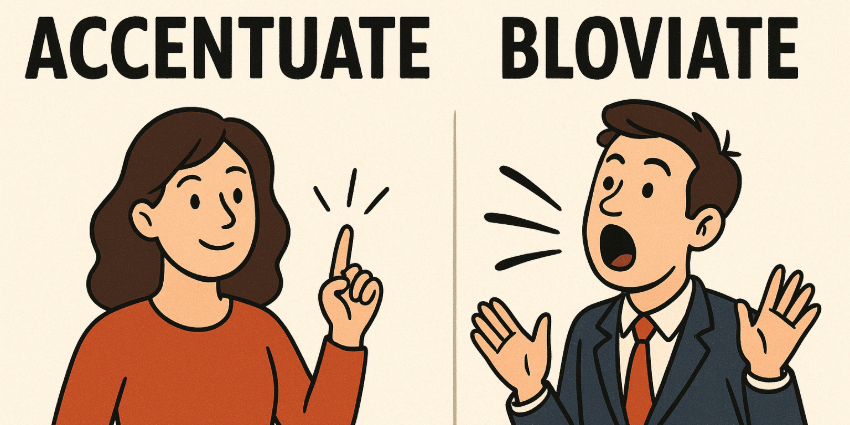The other day, I found myself in a fascinating coaching session with a senior leader who was attempting to parse the nuances between Autonomy and Accountability. All the credit to them in the world, but the more we were pulling apart the scenario in question, the more evident it was that their disappointment in the outcome was more about the confusion they were having between these two concepts.
Allow me to explain with a Thought Partner Scenario (and Clarity Test).
Let’s see how you fare.
The Difference:
Autonomy is about how work gets done. There’s freedom in approach, timing, and methods—with clear guardrails.
Accountability is about what gets delivered. There’s ownership of outcomes, with agreed-upon standards and consequences.
(You can’t have one without the other, but many of us mess this up by conflating the two.)
Here’s the scenario: Your direct report missed a deadline. Your immediate reaction reveals whether you’ve actually given them autonomy or just hoped for accountability without necessarily laying the groundwork.
The Clarity Test:
Ask yourself these three questions about any responsibility you’ve delegated:
1. Can they fail differently than I would? If the answer is no, you’ve given a task with instructions, not autonomy. Real autonomy means accepting that their successful approach might look nothing like yours.
2. Do they know exactly what success looks like? If you can’t articulate the specific outcome, timeline, and quality standard—and neither can they—you haven’t established accountability. You’ve just hoped really hard.
3. What happens if they don’t deliver? If your answer is “I’ll be disappointed” or “we’ll figure it out,” you don’t have accountability. True accountability has teeth—clear, proportional consequences that everyone understands upfront.
Some Common Traps:
Might these sound familiar to you:
Micromanaging with accountability language: “You’re accountable for this project, but check with me before making any decisions.” That’s not accountability—that’s delegation with a side of anxiety.
Autonomy without boundaries: “Just handle the client situation however you think best.” Without clear success metrics or constraints, this isn’t empowerment—it’s abandonment.
Outcome confusion: Holding people accountable for things outside their control (market conditions) while giving them autonomy over things that should be standardized (industry protocols).
The Leader’s Job:
The leader’s job isn’t to choose between autonomy and accountability—it’s to design the relationship between them:
· Set crystal-clear outcomes (accountability)
· Define non-negotiable constraints (accountability)
· Then step back and let them solve it their way (autonomy)
When someone misses the mark, your response depends on which element broke down. Autonomy problems need better boundaries. Accountability problems need clearer consequences.
The Bottom Line:
Great leaders create conditions where people can fail and recover quickly within systems that protect what matters most. They give freedom within frameworks, not freedom from frameworks.
The question isn’t whether your people have autonomy or accountability—it’s whether they have both, clearly defined and working in harmony.
Think of one responsibility you’ve delegated this week?Run it through the clarity test and see what you discover.
How did you fare?
Great? Tell me about it!
Not so great? Schedule a call with me and we’ll talk about it more!












